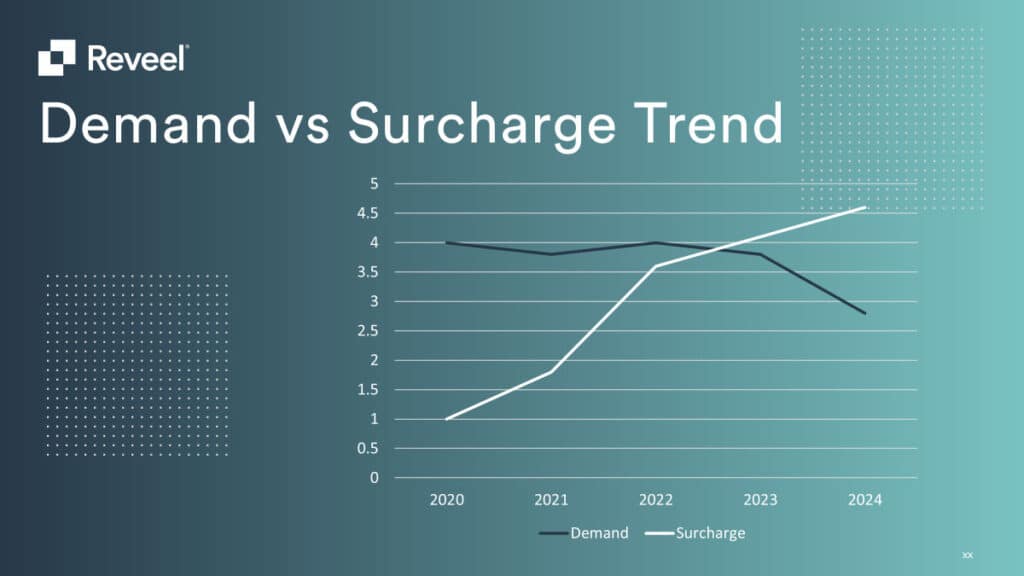Now that 2022 has almost come to a close, it’s time to start preparing for the new rate increases that all the major parcel carriers recently announced. Since we’ve already discussed how FedEx increased their rates and introduced new surcharges, it’s time we look at our country’s other major carrier: UPS. With the millions of companies that rely on UPS to get their goods and products where they need to go, these increases will have a massive impact on the industry. Here are the key takeaways from the new UPS rates recently announced.
UPS Rate Increase at an All-Time High
Over the past ten or more years, UPS has matched FedEx with their general rate increase (GRI) of 4.9%; while this allowed shippers to accurately predict and plan for the future, last year finally broke the trend with a 5.9% rate increase. This year followed suit by increasing the GRI to 6.9%, matching FedEx yet again, however UPS is having their new rates take effect on December 27, as opposed to FedEx who is waiting until the new year. UPS has also introduced increases to their surcharges that well exceed the 6.9% GRI increase, so the biggest effects will most likely be felt in that area.
1. Peak Surcharges Will Now Be Called “Demand Surcharges”
In 2021, we saw UPS rename their “peak surcharges” to “Peak/Demand Surcharges,” and this was meant to signal the increased rates UPS incurred not just during the holiday season, but all year long. In 2023, we’ll see this surcharge simplified to “demand surcharges” to reflect the temporary charges slowly being introduced as permanent, similar to the “temporary” fuel surcharges that were introduced during the mid-2000’s.
2. Longer Zones to See Higher Rate Increases
In previous years, we’ve seen rates increase steadily across most shipping zones. However, this year is the first time we’ll see UPS rates updated proportionately, so you can expect to see longer zones (6-8) increase at a higher rate compared to others. To account for this, UPS has kept their rate changes among weight breaks essentially the same across the board, while last year, this was the area where the major parcel shipper adjusted rates proportionately to account for lighter or heavier packages. If you’re a shipper that has frequent long zone shipments, keep an eye on this area of your costs.
3. A 7.9% Increase Applied to Ground Minimum Package Charges
UPS has increased their Ground minimum package charge at a predictable rate in previous years, but this year saw a higher than average increase that matched FedEx’s: 7.9%. While UPS has allowed negotiation in this area previously, UPS rate changes like this tend to have far-reaching effects that shippers sending packages of all shapes, weights, and sizes see in their expenses. With the new Ground Minimum sitting at $10.10, this is a matter that should easily be prioritized for agreement negotiations in the new year.
4. Most Surcharge Increases to Exceed the 6.9% GRI
As with both FedEx this year and the rate changes we’ve seen from UPS in previous years, the GRI did not include the changes and increases to their many various surcharges. While residential rates continue to be one of the spaces where we see the highest rate increases, we’ve seen UPS up their surcharges 10%-20% in some matters. Right-size packaging is one of the few areas that still offers some grace from each year’s price increases; if you can find the proper packaging that minimizes any excess space, you’ll be able to mitigate your overall shipping expenditure.
How the UPS Rates Increase Will Affect You
In previous years, we’ve seen that not all shippers are affected the same way UPS increases and changes their rates, or restructures their surcharges. This year, if you’re expecting to ship packages across long zones more often or send large shipments on a regular basis, you’ll see rate increases significantly above the 6.9% GRI.
Now that you know exactly what to expect from the new UPS rates, it’s time to put your new knowledge to good use, and Reveel can help with that. Our shipping and logistics solutions leverage machine learning to find straightforward, money-saving opportunities to streamline your operations to make it more efficient and affordable. Contact us to schedule your demo and learn more about how you can offset your shipping costs and UPS’s new higher rates with Reveel’s Business Intelligence platform.




